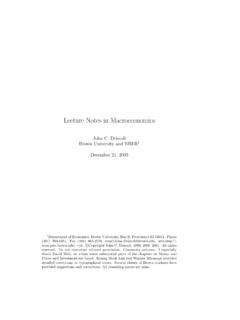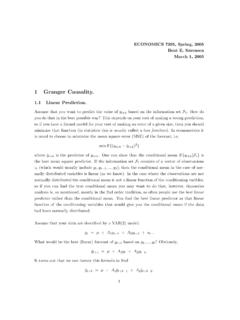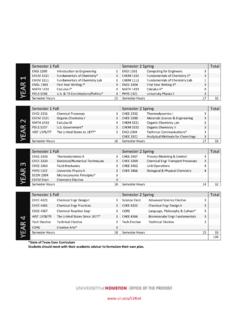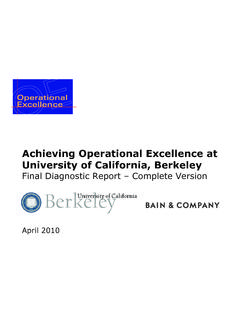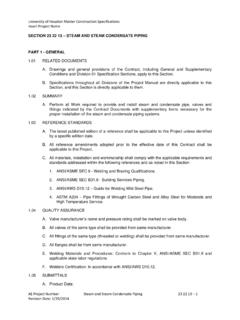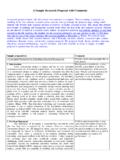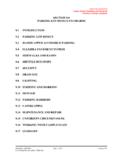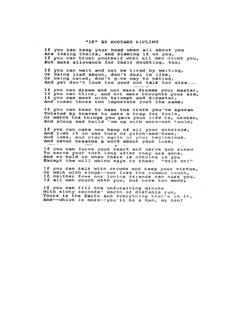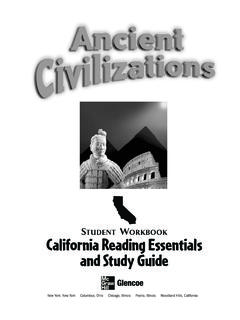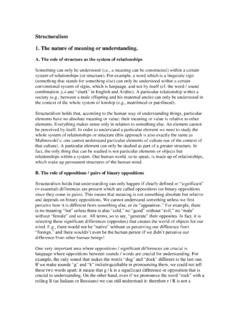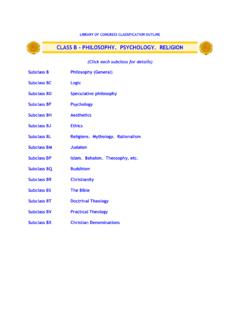Transcription of Aztec Mythology: The Influence of Aztec Mythology on ...
1 Aztec Mythology : The Influence of Aztec Mythology on Mexican Culture and History James W. Salterio Torres Jordan High School for Careers INTRODUCTION The impact of the Latin American intellectual explosion in literature dramatically increased the number of books written by Latin American writers translated from Spanish to English and the number of persons reading this literature . After the Mexican Revolution, the awakened interest in Mexican authors (such as Carlos Fuentes, Octavio Paz, Juan Rulfo, Rosario Castellanos, and other writers) in Mexican Mythology and culture was reflected in their works. In art, Mexican mural painters Diego de Rivera, Jose Clemente Orozco, David Alfaro Siqueiros, Rufino Tamayo, and painter Frida Kahlo expressed their deeply felt Mexican heritage by focusing on traditional pre-Columbian art and artifacts, especially on the art and Mythology of the Aztecs.
2 This unit will introduce students to the Aztec major and minor gods and their attributes and functions within Aztec society. Unfortunately, the rich range of the Mythology of the Aztecs has been overshadowed by their belief in their sun s need for human sacrifice to survive, a practice that was especially repugnant to the Spanish priests, and was a direct cause of the destruction of Aztec temples and religious writings and practices. Enough, however, has survived and been rewritten, often by churchmen themselves, to once again describe these gods and the rites that accompanied their worship. In this unit I shall retell some of these tales.
3 This unit will describe unique characteristics belonging to each god and his Influence in the everyday life of the people. For example, Yacatecutli was a god important to the economy of the state. He was the god of the merchants or pochtecas. Much like the greek god Hermes, he protected merchants from all sorts of dangers during their travels. Tezctzoncatl, the god of pulque wine, was blamed for the offences of his intoxicated followers, similar to the greek god Dionysus whose ate, or madness, overpowered his maenads. Others gods are responsible for providing men with sustenance, such as Chicomencoatl, the goddess of corn maize, and the god Opochtli, worshiped by fishermen, who is said to have invented the fishing net and type of spear used by fishermen.
4 This unit will point out similarities between Aztec Mythology and other world mythologies. From the Aztecs creation myth and its variations, to the long northern trek of the Aztecs led by their tribal god Huitzilopochtli, who refers to them as the chosen, until they received a sign indicating where they should build their capital, Tenochtitlan. Students will compare this journey to Moses leading the Jews from Egypt into the promised land of Israel. I will use this unit to argue that the Mexican psyche has been enormously shaped by its mythological background and history, that the celebration of the Day of the Dead, the Mexican belief that la vida no vale nada (life is worthless), and other aspects of popular Mexican culture are reflections of this Mythology , and that this Mexican worldview works itself into literary works, such as Juan Rulfo s Pedro P ramo, where the protagonist descends to a town called Comala, an allegorical descent into Hell, and walks among and speaks to the dead, while seeking an almost mythical cacique long since dead and El llano en llamas.
5 Ruben Romero s La vida in til de Pito P rez; Octavio Paz s brilliant essays on the Mexicans fundamental nature El James W. Salterio Torres 131 laberinto de la soledad; Agustin Yanez s Al filo del agua; Carlos Fuentes La muerte de Artemio Cruz; and other Mexican writings. Students will discuss specific authors who have used Aztec Mythology , in one form or another in their writings, including the Chilean Nobel prize-winning poet Pablo Neruda in his Canto General. Students will discuss the mythological elements in Carlos Fuentes science fiction story Chac Mol, even though the story deals with a Mayan, not an Aztec , deity. This unit is written for a 12th grade Advanced Placement course in Spanish and Spanish-American literature .
6 It will expose my Spanish AP students to Mesoamerican Mythology , allowing them to study and compare the similarities and differences with the better-known classical greek and Roman myths. Students will study and use handouts and visual aids, that is, illustrations of the gods taken from the various codices. This unit will be taught completely in Spanish; therefore, all of the material in the unit will be translated into Spanish. OBJECTIVES This unit will meet the following Project Clear for Languages Other Than English (Foreign Language) objectives: Goal 1: Communication (Reading) Students will read to discover meaning through context and visual clues.
7 Goal 1: Communication (Writing) Students will write in the target language to convey a message or to exchange information about everyday activities or oneself. Goal 2: Cultures: Students will describe some of the daily activities of the people of the target language and how this is reflected in their culture and language. Students will locate the major countries and areas of the world where the target language is spoken and identify some well-known personalities as well as some of the characteristics of the people. Goal 3: Connections: Students will use the language to make connections with other subject areas and to acquire information.
8 Goal 4: Students will compare and contrast one language and culture to another language and culture. UNIT BACKGROUND Foreword Desde ab inicio adoramos nuestros dioses y los tenemos por buenos, as deben ser los vuestros y no cureis m s al presente de hablarnos de all time we have worshipped our own gods and thought they were good. I do not doubt the goodness of the god whom you worship, so do not trouble to speak to us about them at present. (D az del Castillo 317) Moctezuma s words to Cortes contain the seed for the destruction of the Aztec religious system by the Spanish Catholic Church. The religious intolerance of the Spaniards, which had been reinforced by their long and bloody reconquista of Spain from the Moors, ending with the expulsion of the Moors and the Jews from Spain in 1492, was in sharp contrast to the Aztec religion, which had already incorporated a great number of ancient Mesoamerican gods into its pantheon.
9 Edith Hamilton contrasts the gods of the Greeks with those of primitive man as follows: Houston Teachers Institute 132 Horrors lurked in the primeval forest, not nymphs and naiads. Terror lived there, with its close attendant, Magic, and its most common defense, Human and their like were what the pre- greek world worshipped. One only need place beside them in imagination any greek statue of a god, so normal and natural with all its beauty, to perceive that a new idea had come into the world. With its coming, the universe became rational. (4, 8) It is precisely the Aztec s desire to make their world rational that gave rise to many, even the most terrifying of their myths.
10 Many of the Aztec gods are agricultural gods, and the need to appease these gods through ritualistic planting and sacrifices is shared by cultures that depend on agriculture. The Aztec s creation myths are an attempt to explain the origins of the universe and of man. Unfortunately for the Aztecs, human sacrifice, the most disgusting ritual, is normally the focus of a study of the Aztecs and their religion. The Aztec religion was polytheistic and some of the anthropomorphic gods in the Mexican pantheon were originally human heroes elevated to divine stature, for example Topiltzin Quetzalcoatl of Tula and Mixcoatl among the Chichimecs.
